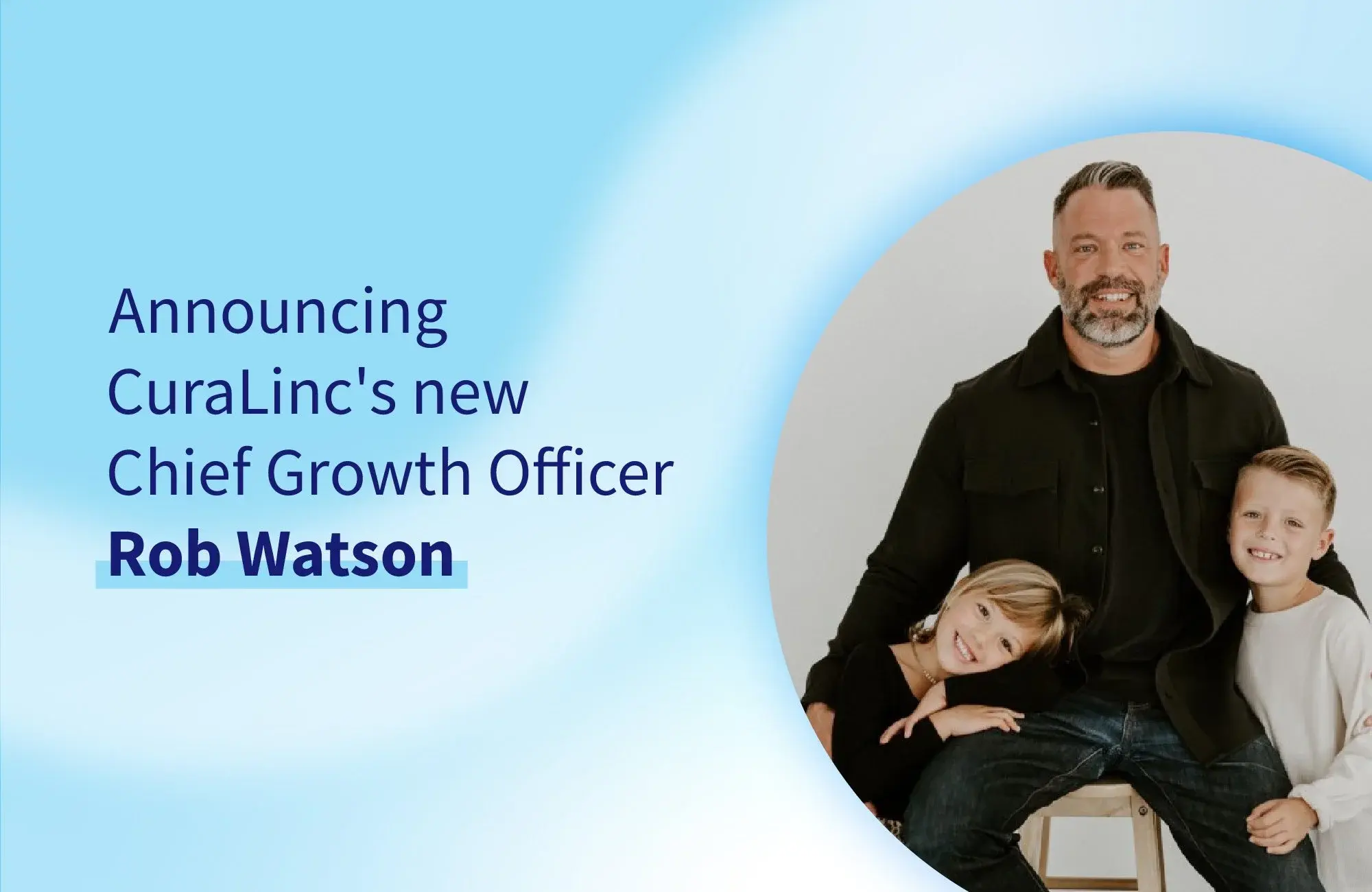When it comes to mental health care, one of the strongest predictors of success is the therapeutic alliance, or bond, between an individual and their counselor or coach. There are many factors that contribute to a high-quality therapeutic alliance, and offering individuals the choice of modality and provider they feel comfortable with gives it a strong foundation to flourish.
In this post, we’ll discuss what the therapeutic alliance is and how it impacts counseling success, as well as how CuraLinc helps employees and their family members find the right provider to meet their clinical and cultural needs.
What is the therapeutic alliance and why is it important?
Therapeutic alliance refers to the relationship or bond built between a provider and a participant that fosters trust, openness and collaboration. It is a fundamental element of counseling and is considered essential for treatment success. A strong therapeutic alliance can promote participant engagement, motivation and adherence to therapy by offering them a safe space to explore their thoughts and emotions, work through challenges and develop healthy coping strategies.
Participants who trust their therapist and feel comfortable opening up can discuss their deeper, more challenging emotions. This ability to feel safe, supported and understood leads to more positive outcomes and increases the likelihood that treatment goals will be met. On the other hand, a weak or absent therapeutic alliance can have many negative consequences, including limited progress, poor engagement and even dropouts.
The key elements of a high-quality therapeutic alliance
A high-quality therapeutic alliance has five essential elements. When these are in place, participants and providers are more likely to build the strong relationship necessary to achieve positive treatment outcomes.
Participants are more likely to be comfortable discussing difficult feelings when providers create a supportive, non-judgmental environment
Mutually agreed-upon goals help everyone work toward the same outcomes, encouraging participation, reducing barriers, and increasing the likelihood of success
Realistic expectations about treatment pace and outcomes help participants to stay focused and avoid frustration
Providers and participants share a responsibility to communicate and work towards change.
Evidence-based practices should always be utilized for treatment to be successful
Providers can foster strong therapeutic alliances by displaying strong boundaries and qualities, like kindness, empathy, flexibility, honesty and openness
How culturally competent care plays a role in the therapeutic alliance
For many people, especially those seeking mental health support for the first time, the idea of working with a clinician whose background seems drastically different from their own may deter them from seeking treatment. In fact, recent data from the National Council for Wellbeing found that over 1 in 10 U.S. adults didn’t get needed mental health care in the past year because they couldn’t find a provider who was a good cultural fit.
Cultural competence is loosely defined as the ability to understand, appreciate and interact with people from diverse cultures or belief systems. The need for this understanding may be based on characteristics such as race, gender identity, age, religion or sexual orientation. Cultural competency is an important consideration for mental health professionals and is thought to vastly improve therapeutic alliances. That’s why many people believe that finding a therapist who shares an identity or lived experience with them can establish a strong therapeutic alliance more easily and quickly.
High-quality mental health care starts with choice
If an individual feels empowered to make a choice about the provider they want to see before they schedule an appointment, it can lead to a positive feeling about that therapist and can increase motivation to attend treatment. That positive feeling alone can increase the likelihood of a good therapeutic alliance in the future.
That’s why CuraLinc takes the time to understand the preferences that matter most to employees, ensuring that individuals are connected to a provider they can relate to who also has the skills and expertise needed to address their area of concern.
A behind-the-scenes look at CuraLinc’s provider matching process
When participants reach out for support, our Care Advocates, licensed mental health clinicians averaging 11 years of experience, complete a comprehensive assessment to better understand each individual’s clinical needs and provider preferences.
From there, we hand-select a shortlist of providers based on the participant’s clinical needs, location, availability, preferred modality, MHSA network, as well as certain individual characteristics or dimensions of diversity like gender, religion, race, ethnicity, native language, age, sexual orientation or military service. We always follow up with both the individual and the therapist to monitor treatment progress and determine if the right match was made, with over 97% of participants completing their care with the provider they were initially matched with.
For those who favor the convenience of scheduling care on their own, CuraLinc’s real-time scheduling platform provides easy access to a diverse set of counselors and coaches that allow participants to choose a provider who meets their needs and preferences, such as gender, race, language, licensure and specialty.
Although finding the right provider might sound like searching for a needle in a haystack, our average speed to care is still only 2.1 days across in-person and virtual modalities for routine cases (and even faster in urgent or emergency situations). That’s because of our commitment to the development of a diverse provider network that’s regularly assessed for speed to care, as well as other quality metrics such as treatment outcomes and participant satisfaction.
Preference and choice in treatment modality
While the participant/provider match is essential in building a strong therapeutic alliance, employees should also have a choice in how they receive treatment, or they may forgo it altogether. Recent data from The National Council for Wellbeing confirms this, finding 25% of U.S. adults didn’t get needed mental health care because they couldn’t find a provider who offered a visit format (e.g., in-person, telehealth) they felt comfortable with.
Although many people assume the rise of digital therapy has created more demand for it, recent data shows participants prefer in-person care over video-based treatment almost 2:1. While both video and in-person counseling can be effective, allowing employees to choose the type of care that’s the best fit for themselves and their family members sets the stage for a strong therapeutic alliance and positive clinical outcomes.
Some of the most common forms of treatment through CuraLinc’s EAP include in-person counseling, video counseling, coaching, text therapy, virtual group support, as well as self-guided resources like digital cognitive behavioral therapy. Each has its own benefits.
In-person counseling
In-person counseling has long been the gold standard for mental health care and still has widespread appeal among today’s diverse workforce. In-person appointments can help strengthen a therapeutic alliance as they allow space for a provider to observe body language, eye contact and other nonverbal forms of communication.
Participants who chose in-person counseling showed outstanding wellbeing and productivity results, as well. Our peer-reviewed study published in the International Journal of Scientific and Research Publications found that after in-person treatment:
Anxiety severity was reduced by 65%, with 80% of at-risk participants fully recovering
Depression severity was reduced by 50%, with 78% of at-risk participants fully recovering
Alcohol misuse was reduced by 53%, with 76% of at-risk participants fully recovering
Work absenteeism was reduced by 88% in the 30 days after treatment, a reduction of 21 hours per month on average for employees who initially had an absenteeism problem
Telebehavioral (video) treatment
The right form of treatment means meeting employees where they are – and sometimes that’s not in person. Individuals who cannot attend face-to-face counseling sessions – whether due to location, transportation costs, scheduling or preference – should have more options available to them. Almost all of CuraLinc’s providers offer video counseling to meet this need. In fact, nearly 1 in 5 participants who begin in-person counseling eventually choose to have one or more sessions with their counselor via video appointment. Offering this flexibility ensures participants have the opportunity and access to in-person care, but also provides reassurance that if location or scheduling challenges arise, they can continue to work towards their goals.
Mental health coaching
While therapy is more clinical in nature and tends to focus on concerns that occurred in the past, mental health coaching is more forward-looking and tends to have much less stigma around it than counseling or therapy does. CuraLinc’s coaches, all of whom are also licensed counselors, can help employees reduce burnout, increase self-confidence, strengthen emotional fitness and more. Coaching helps employees improve their health, wellbeing and productivity by building new competencies and skills, such as mindfulness and meditation. A peer-reviewed study on CuraLinc’s participant data on coaching outcomes found that 94% of participants demonstrated reliable improvement from coaching.
Text therapy
CuraLinc’s Textcoach® is a secure and stigma-free way for participants to connect with a licensed counselor, also known as a ‘Coach,’ through asynchronous texting. For those who don’t need a higher level of care or simply prefer not to connect with a provider face-to-face or at a scheduled time, text therapy can be a great option. This avenue of care helps users improve emotional fitness and wellbeing through text-based dialogue, voice notes and digital resources.
Virtual group support
CuraLinc’s virtual group support allows participants to connect with others experiencing similar challenges while remaining anonymous. When people have an opportunity to hear from others they can relate to, it can make them feel understood and ultimately help increase positive outcomes. This form of treatment also extends the footprint of care offering a unique option for those who may be hesitant about one-on-one counseling or who simply prefer a group setting.
Digital cognitive behavioral therapy
Also known as dCBT, digital cognitive behavioral therapy helps bridge the gap between interventions and engages participants who may not have otherwise used the program. In fact, 89% of CuraLinc’s dCBT participants had not previously used their employee assistance program. CuraLinc’s dCBT platform provides a variety of self-directed dynamic resources to support emotional fitness and overall wellbeing. After completing a profile, watching an introductory video and completing a brief survey, participants are placed in the category that best meets their needs and gain access to modules that can help with issues like anger management, general depression, social anxiety and sleep management, among others.
Empower employees with choices to ensure a strong therapeutic alliance
As today’s employees demand better access to personalized mental health care, employers can’t overlook the power of choice and its impact on a strong therapeutic alliance and positive outcomes. When participants know they have a choice in how they receive care and who they receive it from, they are more comfortable and more motivated to follow through in achieving their goals.
__
Watch our recent Coffee with CuraLinc episode, How Preference-Based Provider Mapping Improves Employee Mental Health, to learn more about how your workplace mental health program can empower employees with choice and support the development of a strong therapeutic alliance for each participant.




